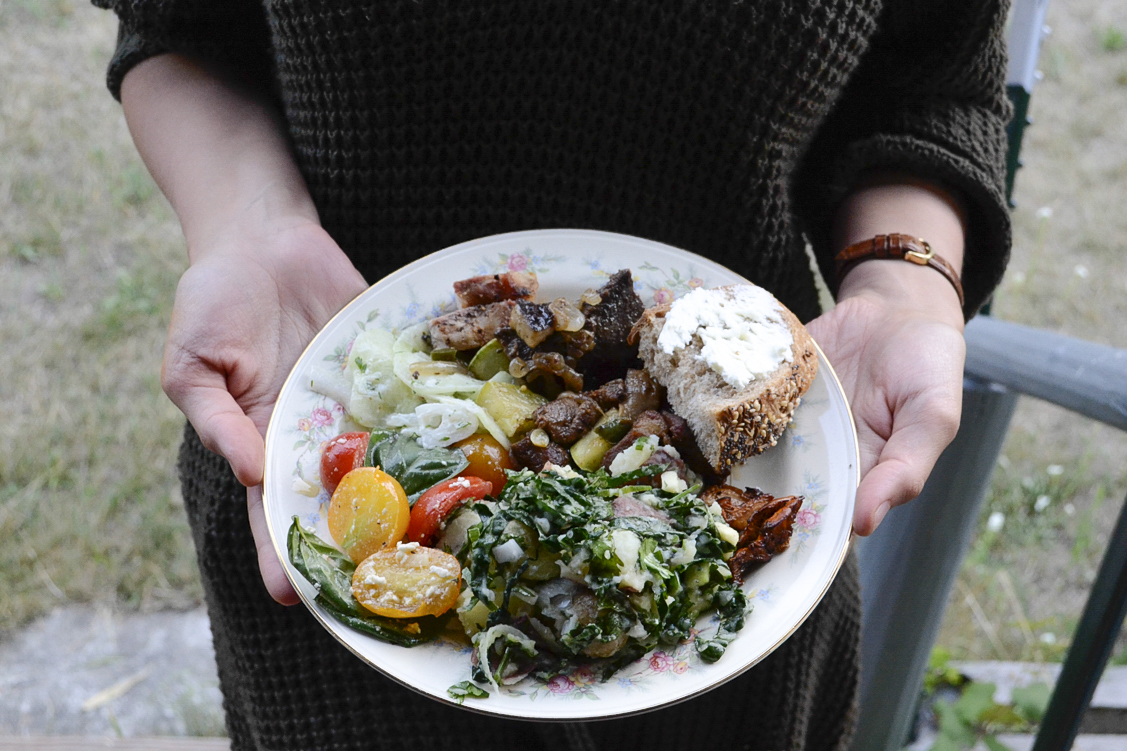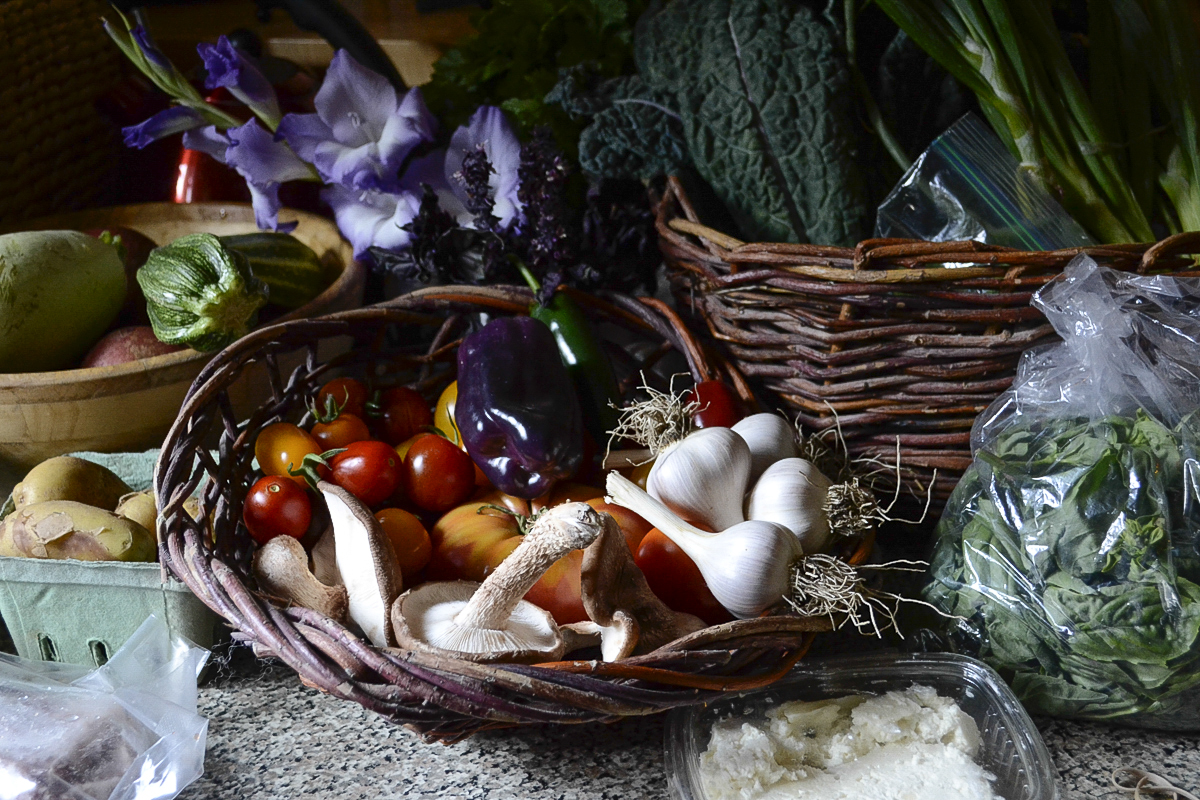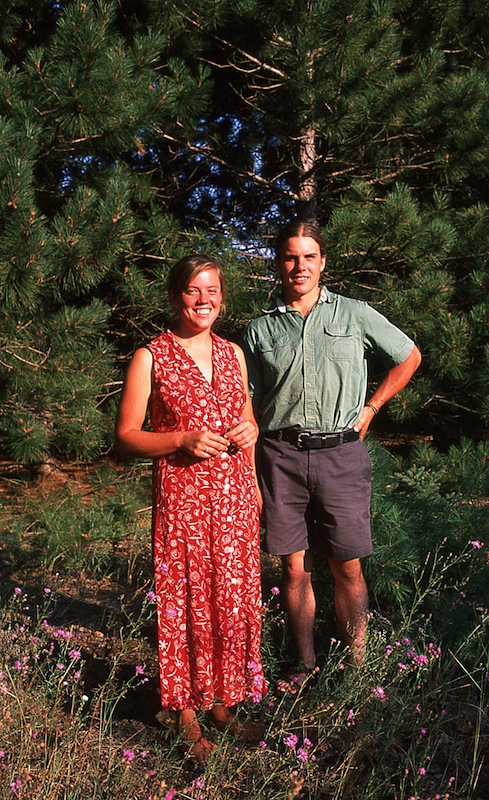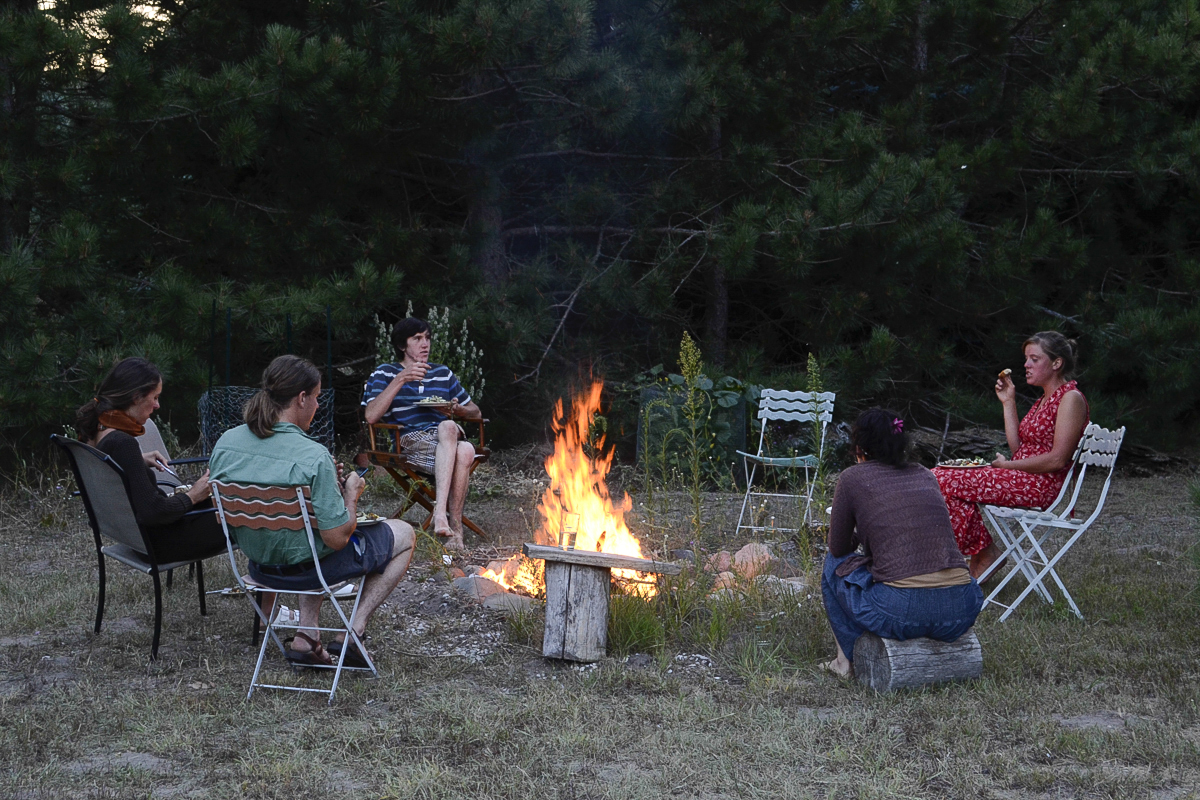 Never before have so many been able to base their dietary choices on ideological principles. From the ethical to the spiritual to the corporeal, labels like fruitarian, paleo, raw foodist, macrobiotic, vegan abound. These labels are composed of specific sets of foods, sets through which good health can be attained.
Never before have so many been able to base their dietary choices on ideological principles. From the ethical to the spiritual to the corporeal, labels like fruitarian, paleo, raw foodist, macrobiotic, vegan abound. These labels are composed of specific sets of foods, sets through which good health can be attained.
As we’ve shifted from agriculture toward industry, we’ve shifted from village to city, collective to individual causing a sort of dietary amnesia that’s cut our connections with community and has made the pursuit of good health a blindly individualized one.
Our globalized marketplace has compounded this amnesia by disrupting seasonal food cycles of one’s region and confounding one’s sensibilities of regional foods. It’s brought us fresh strawberries in January, coconut oil in even the most northern climates and has allowed for superfoods of Andean valleys and Himalayan peaks to be as casually consumed in North America as the potato, the cabbage, the onion once were.
A fruitarian living in northern Minnesota can subside on crates of bananas from Costa Rica, a vegan can obtain protein from Brazilian-grown soy, a raw foodist can make “cheesecake” from Indian cashews and Mexican limes.
Most of the time, good health is a value untethered to factors like regions, seasons, and community.
I spent this past week in Leelanau County introducing Lu to old friends & Michigan’s salt-less ocean. While there, we visited two of my favorite cooks (and friends)–farmers (and siblings), Grace & David Flaugher. The Flaughers never cease to amaze me with their sincerity, their humor & the ease with which they live so attentively with their land and their community, collectively, one might say.
In Honey From a Weed, a treasury of Mediterranean dietary traditions, Patience Gray writes,
“Good cooking is the result of balance struck between frugality and liberality…It is born out in communities where the supply of food is conditioned by the seasons…Once we lose touch with the spendthrift aspect of nature’s provisions epitomized in the raising of a crop, we are in danger of losing touch with life itself. When Providence supplies the means, the preparation and sharing of food takes on a sacred aspect.” (Gray, 10).
I came to know David at a bonfire on the chicken farm where Grace sometimes processed (slaughtered, de-feathered, de-gutted) chickens and I believe he was wearing a buckskin jacket he’d made from shot to stitch. Naturally, talk soon turned to animal fats, raw dairy, and his illustrious cured beef (that, by the way, he’d rendered from his cow, and that, by the way, you can procure through the simple exchange of a ride home). That kind of talk continued through a whole summer’s worth of good cooking as Gray describes–with foods grown or raised, harvested or slaughtered, gathered or milked by the hands of our community.
I believe Gray’s equation rings true for, not only good cooking, but good health, as well. In 1939, Dr. Weston A. Price published the results of over 10 years of research on traditional diets. He traveled to hundreds of cities in 14 disparate countries in order to understand how traditional and isolated communities without access to modernized health-care or modern nutritional knowledge were such excellent examples of good health.
He studied the diets of communities ranging from the isolated peoples of the Loetschental Valley in Switzerland to the Maasai of Southeast Africa to the Maori of New Zealand. The diets he studied were comprised of vastly different foods, some with no specific foods, let alone superfoods, in common. Thus, Dr. Price concluded that the most crucial component to outstanding health was not the implementation of a dietary label, a specific set of foods, but was, instead, the use of and the reverence for nature’s provisions.
That’s not to say there weren’t any commonalities between the diets he studied: for example, dairy foods were always raw, grains were freshly milled and fermented, animals were hunted or otherwise raised on pasture, nuts and seeds were sprouted, vegetables and fruits were often fermented. There was a common emphasis on fats–particularly animal fats–and on whole animal consumption (like organ meats! bone marrow! head cheese! fish eyes!).
We now have the scientific research to prove the nutritional value of these methods and principles, but how is it that so-called “primitive” peoples knew their value? I believe that by being attentive to the rhythms of their lands, by tending to, not only their individualized good health, but also their collective good health they received, what many Price fans term, “nourishing wisdom.” When we nourish our Earth, she nourishes us right back.
A pork liver from the pig David had slaughtered earlier that day, two pork steaks, some lamb meat from last season’s slaughter, new onions, new garlic, green onions, kale, peppers, squash, potatoes from Grace’s garden, goat’s feta from David’s goats, wild mushrooms, sourdough bread from the local bakery, more goat’s cheese from two local goat farmers, cider from the local cidery.
These foods, the fullness of our late summer season, sliced and seasoned and cooked in cast iron, spooned and forked onto our plates–plates laden with good cooking, good health–these foods that are super (for how can a potato grown by a friend, grown on the same soil on which our feet rest be anything less than super?), these foods that are sacred, these foods that refuse any outmoded dietary label, these foods that invite communal preparation, these foods that are enjoyed while gathered ’round a fire with dear friends, these are the foods for me.
Just call me a Flaugher-ist.
References:
Gray, Patience, 1986, 2009. Honey From a Weed. Devon, Prospect Books.



